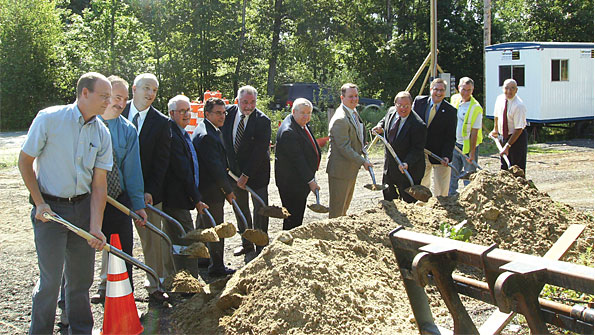Finding ways to finance infrastructure projects
What is in this article?
Show how infrastructure supports business
Of course, real estate and tourism are not the only types of industries that rely on safe drinking water and effective wastewater infrastructure. In fact, virtually every type of significant commercial or industrial business needs access to wastewater treatment. After all, employees need to use bathrooms during the day, and many different types of business use water in their daily operations. Municipal administrators and planners, as well as their project designers, just need to be able to articulate how the infrastructure supports local business.
Take, for example, the case of Oxford, Mass. It joined with neighboring Dudley and Webster, Mass., applied for and received $3.9 million in grants and tax credits to upgrade and extend area sewer systems. The project is a public-private partnership through which local businesses also have pledged funds for the project, which ultimately will support economic development throughout the three communities.
The development will not only create construction jobs, but it also will give local companies the infrastructure they need to support anticipated growth. In fact, this and other water projects were directly responsible for Home Depot and Market Basket supermarket stores moving into the community, and for a large local employer putting in motion a long-planned expansion that will bring many new jobs. The Oxford project is just one of more than two dozen infrastructure projects in which the state has invested $400 million in recent years.
The MassWorks program is only one example of how states are making grants and other financing mechanisms available to support job creation and economic development while improving local infrastructure. And these programs aren't just available for water and wastewater improvements. Most states also have grant and loan programs designed to improve and rebuild local roadways and transportation systems.
Likewise, the federal government has hundreds of programs that can provide funding for all types of infrastructure, including water and wastewater, public transportation and roadways, and bicycle path and recreational trail development. Those funds can be accessed through numerous different federal agencies, including the Federal Transit Administration, Health and Human Services, the Department of Agriculture, the Economic Development Administration, the Department of Transportation, the Environmental Protection Agency, and even the U.S. Treasury. Municipal administrators and their design consultants just need to know how to find the opportunities, and how to access them for use in financing infrastructure and development.
Meredith Zona is a vice president at Fay, Spofford & Thorndike in Burlington, Mass. Contact her at [email protected].

















A good article that alerts us
A good article that alerts us to hidden or overlooked resources.
However, there’s an even larger problem. Infrastructure projects can be double-edged swords. Well-designed and well-executed projects (water & sewer, transportation, schools, etc) can result in higher land prices that chase affordable development away to cheaper, but more remote sites. This sprawl development then requires the duplication of expensive infrastructure at these more remote locations.
To add insult to injury, the public ends up paying for infrastructure projects at least twice. First, they pay taxes (federal state or local) to generate the funds. Second, they pay higher rents to occupy sites that their taxes have made more valuable as a result of improved infrastructure. Sometimes, we pay a third time, to subsidize affordable development at locations made valuable by infrastructure investments.
Fortunately, some communities have remedied this situation by using value capture to transform their property tax into a public services access fee. This is accomplished by reducing the tax rate on building values while increasing the tax rate on land values. The lower rate on buildings makes them cheaper to construct, improve and maintain. Surprisingly, the higher rate on land values makes land more affordable by reducing the profit from real estate speculation.
As an added bonus, this approach to property taxation creates an economic imperative to develop high-value sites. These tend to be infill sites near urban infrastructure amenities. Thus this approach encourages compact, infill development which saves nearby farmland and reduces the need to prematurely extend expensive infrastructure into exurban areas.
For more information, see “Using Value Capture to Finance Infrastructure and Encourage Compact Development.” It can be found at https://www.mwcog.org/uploads/committee-documents/k15fVl1f20080424150651.pdf